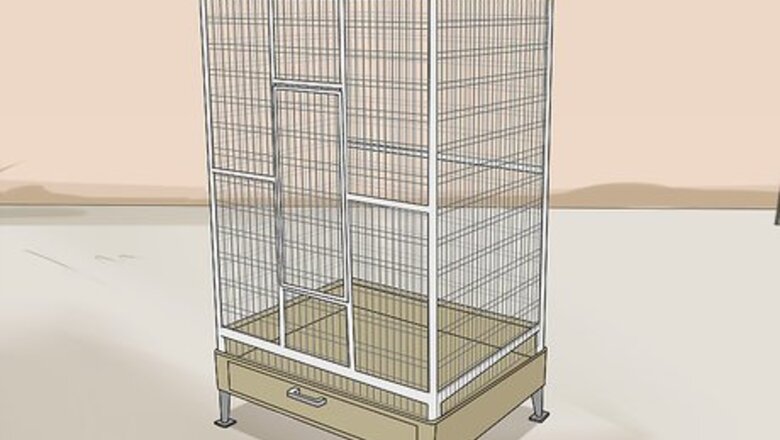
views
Creating a Comfortable Environment
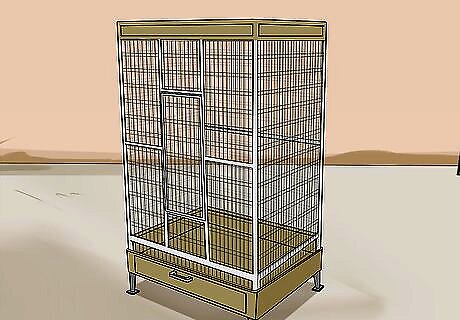
Provide your parakeet with an ample-sized cage. When you first bring your parakeet home from the pet store, you’ll probably be given a carrier box. This box will do for the trip home, but should most certainly not be used as a permanent housing space. Your parakeet needs enough room to live and avoid boredom. This means it’ll need several places to perch so it can watch you during your daily routine. When transferring your parakeet to its new cage, be sure to open the cage door and put the box up to the tip of the cage door. Don't put your hand in there and try to force the bird out. You want to let the bird come out on its own. Patience is the key to getting your bird in the cage. If you shake the box and tilt it, you're just startling the bird more. This will cause the bird to want to move back further into the box.

Place your parakeet in a room with light. A good environment is vital to a healthy life for your parakeet. Do not put parakeets in a dark room that is quiet. If your room is bright and you are interacting with the parakeet, it will feel comfortable. Make sure the cage is level and in an area with adequate, but not too much foot traffic.
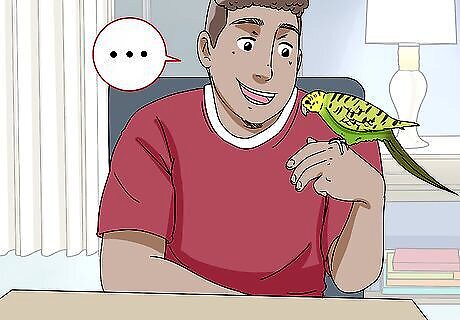
Talk to your parakeet. Before you even begin to hand train it, you’ll want your parakeet to be used to your voice. Keep your voice at moderate levels with a normal speaking tone. Talk to your bird about anything you want to, just be sure to talk to it. It will hear your voice and want to inspect the source of the sound. Only after it isn’t startled by your voice and your physical presence outside its cage should you begin training. This is also the first step to train your parakeet to talk. Choose what language you want your parakeet to repeat.
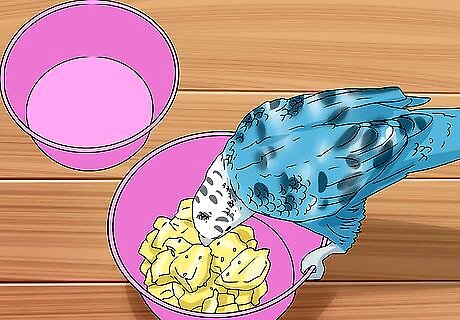
Provide enough food and water. You should change your parakeet’s food and water every day. Birds can be very particular about their food and water, just like people. They might perceive something as tainted and refuse to touch it. Food: Make sure that you place at least a tablespoon of seed in a parakeet’s food bowl every day. Your parakeet will eat the seeds, but leave shells and discarded parts of the seed in its bowl or near it while eating. Many new parakeet owners confuse this refuse with new seed and don’t feed their parakeets as regularly. Change its food every day to avoid this problem. Water: Fill its water dish every day. Tap water works well. Don't add any vitamins or medicines. Some parakeets will refuse to drink this water if it tastes additives.
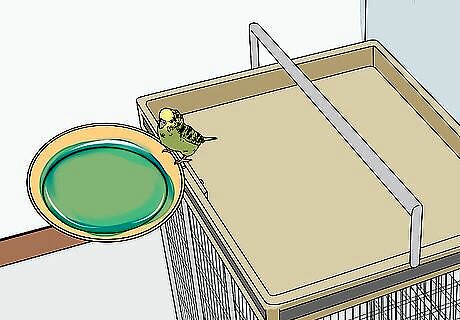
Provide a separate, shallow water pool for bird baths. The water should be no more than one to two inches deep. Your bird will bathe itself. It doesn’t need to be bathed by you. Every couple of days replace the bird bath water. If your bird gets comfortable outside its cage, you can purchase mountable bird baths that attach to the outside of the cage.
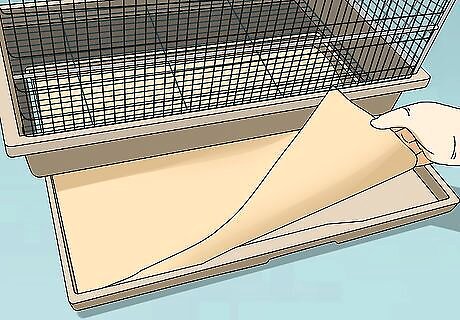
Change your parakeet’s paper cage lining. There are numerous different products out there designed to line a parakeet's cage, yet most are actually dangerous for parakeets. Cedar shavings contain toxins that can affect your bird’s digestive tract. Pine shavings can be ingested by your parakeet and cause digestive problems too. Cat litter absorbs moisture and if ingested can cause serious issues. Stick to paper products. You can purchase paper designed for parakeet cages or you can just use unscented paper towels or unprinted newspaper. Inspect your parakeet’s cage daily for excess fecal matter. You should change its lining every couple of days.

Give your parakeet fun toys. Parakeet toys come in all shapes, sizes, colors, textures, and smells. Many even make sounds. The more variety you give your parakeet the happier it’ll be. Your parakeet needs stimulation to be happy. Don’t let your parakeet get bored. In the long run, the happier your parakeet is, the easier it will be to hand train it.
Establishing Hand Trust
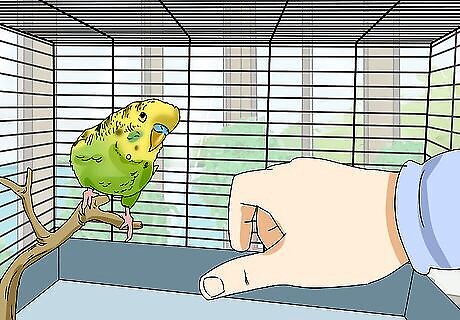
Stick your hand into your bird’s cage several times a day. Do this repeatedly. Make sure that you are inserting your hand slowly and in a non-threatening way. Don’t shake your hand around needlessly. Don’t shake the cage or hit your bird. Your goal is to teach your bird to trust that your hand won’t hurt it. Lots of parakeets may fly around or squawk at you. However, remain still so it can determine that nothing will happen at this point.
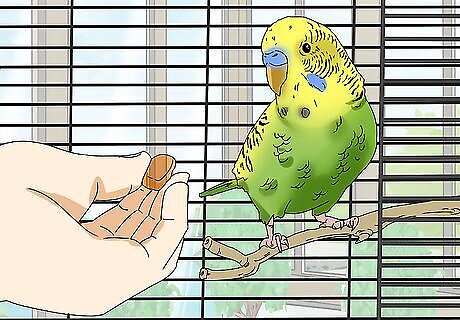
Have a treat in your hand. After your bird gets used to your hand being in its space, a treat will tell your bird to value your hand. Your hand should signify a safe and even beneficial addition to its space. The ideal treats will be made of grain or seed. They should be big enough for your bird to recognize, but small enough for your bird to pick up off of your hand.

Present your parakeet with a perch. Perches come in many sizes. Most look like wooden dowels. Some are made out of metal. They all range in size. You should choose a comfortable perch that extends from your hand around 4 to 5 inches. Your goal with this step is to get your bird used to perching near your hand. The dowel will eventually be replaced by your fingers.
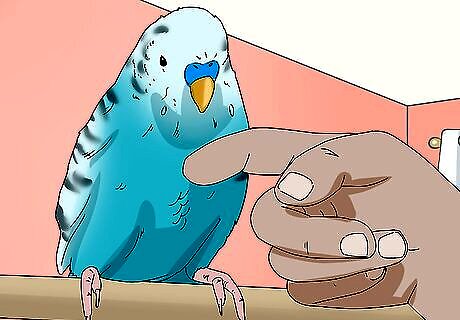
Gently nudge your parakeet’s chest. This will be the physical cue that tells your parakeet to step onto the perch. Make sure that you don’t jab your parakeet too hard. If you do, your parakeet will associate the perch and your hand (or presence) negatively.
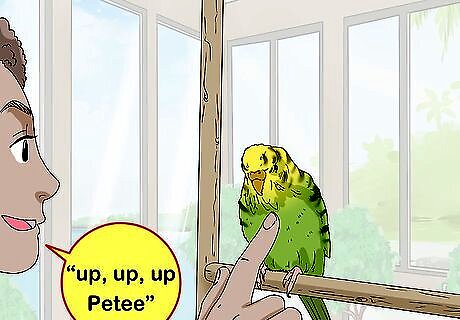
Say “up, up, up” followed by your parakeet’s name. Let’s say your parakeet’s name is Petee. You’d say “up, up, up Petee” while nudging its chest. This will add an auditory cue for your bird to learn. Eventually, you may be able to have your parakeet hop onto your finger with one or the other signal.
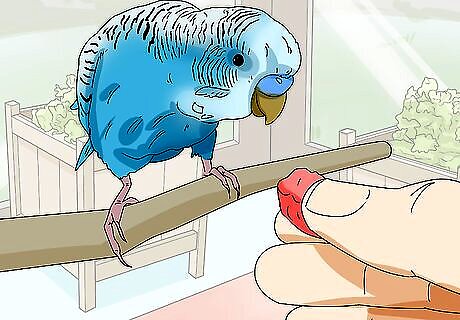
Give your parakeet a lot of praise when it steps up onto the perch. This includes gently petting its front, below its beak. Try not to pet your parakeet on its head or on its wings/back because it upsets the bird. or additional treats. In this respect, parakeets are like dogs and cats. They need some positive reward in order to learn the trick. Some parakeets don't like to be petted. If your parakeet is one of these, stick to treats. Make sure that you choose treats that are made from natural seeds, vegetables, and grains. Every parakeet is different and will prefer different treats. Experiment and figure out what your parakeet likes the most.
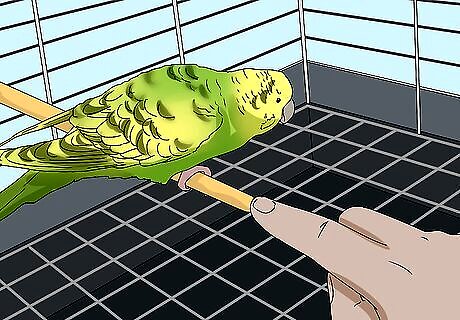
Move your finger closer to the end of the dowel. Place the dowel and your finger near its feet. When your parakeet begins to step onto your finger instead of the perch, you can get rid of the perch entirely. Make sure you keep your finger straight, as if the perch is still in place underneath your finger. Your parakeet needs to feel safe and stable at all times or else it will avoid your finger out of caution or fear.

Take the parakeet out of the cage while it’s perched on your finger. Remember that it has spent a long time inside the cage and will be understandably scared. This may take a few days. Keep the doors and windows closed so your bird doesn't escape.

Have friends and family hand train your parakeet in the same way. This is the only way that your parakeet will feel comfortable with its human flock.

Allow the bird to sit on other parts of your body. Only after it feels comfortable on your finger should you give it the opportunity to explore other parts of your body. This includes the head, knee, shoulder, and arm. You can train them to sit anywhere as long as you take things very, very slow so your bird feels safe.
















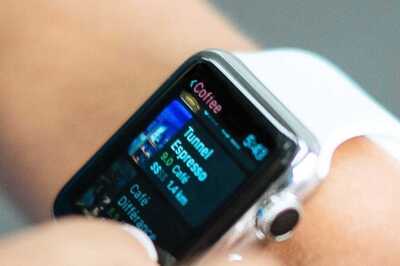



Comments
0 comment